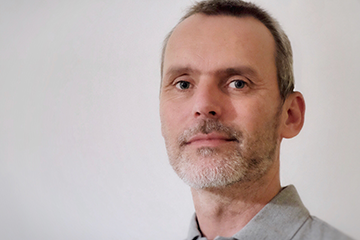Stéphane Le Berre | CEA
20th November 2017
Stéphane Le Berre, CIVA Project Manager at CEA, we thank you for dedicating some of your time to our questions.

CIVA users are looking forward to the release of this latest version. How long have you been working on it, and how many people have been mobilized on this project?
Every year, we provide the features that have reached a sufficient level of maturity so that CIVA customers can use them with maximum confidence. This assumes on one hand to have validated the physical models, and on the other hand to have tested the features on several practical cases, optimized performances and fixed bugs. Some new features of this version are the result of several years of research, others were carried out over the 2016-2017 period, in the context of projects and collaborations or according to user requests; finally, some functionalities were already developed in the version but did not have an appropriate graphic user interface for external use.
About 25 people contribute daily to the development of CIVA, with different types of skills: physicists and numerical scientists (in the fields of acoustics, electromagnetism, radiography, data processing), computer engineers (software architecture, parallelization, 2D / 3D imaging, CAD, GUI) and a project management team (specifications, coordination and validations). To this can be added several industrial and academic partners who are involved in the development of the CIVA platform. Indirect contributions, whether as part of our activities in methods and instrumentation for NDT, or via our collaborative projects, also play a very important role in the development process.
Could you tell us what are, in your opinion, the most expected improvements for CIVA users?
We regularly have feedback from CIVA users, especially through EXTENDE’s support and training services. We try as much as possible to take them into account in our roadmap for an evolution of CIVA closer to the practices. The difficulty lies in the fact that it concerns as much the capabilities of the models, than the consideration of new cases of application, or more ergonomic and functional aspects. Unfortunately, we have to make choices and move forward step by step. CIVA 2017 has a wide range of novelties, with major advances in simulation (finite element coupling for small ultrasonic defects, Pulsed Eddy Current), the optimization of computation times, the improvement of processing and reconstruction tools, and also ergonomic improvements, with for example a new library of UT probes linked with major manufacturers.
What was the biggest challenge you had to overcome during this development?
One of the biggest challenges of this release has been to make the concept of “metamodel” for parametric studies in simulation accessible and controlled. This is even more important to us as it is only a first step that opens up a huge potential for NDT performance demonstration, optimization and inversion. From this version, the possibilities for studies have been increased tenfold thanks to this new approach, with new, extremely fast and precise tools for analysis in sensitivity and POD.
Which improvements did you have to give up?
We are in a logic of continuous improvement, so we cannot say that we gave up. Version content is always a compromise between our R&D activity, our ability to validate and finalize new features, and the consideration of user requests. The annual rate of major releases gives us the freedom to postpone features that are not yet ready with a limited time gap, and thus favor quality over quantity. For example, CIVA 2017 offers few innovations in Guided Waves and on the Composite thematic, and yet our R&D activity on these topics is intense and full of promises!
How do you determine the directions of your future developments?
We develop our strategy in three main areas: the performance of the models (precisions, limits, validation and speed), the adequacy with the practices (ergonomics, new functionalities, users’ requests) and the extension of the scope of NDT simulation applications (new techniques, new methods). Besides, the institutional projects and collaborations we develop both with academic laboratories and with industrial actors give us an essential framework and guide for the development of CIVA. I take this opportunity to thank all our partners and customers who join this initiative, and who help us make this project open and useful to the entire NDT community.
What can we expect in the 2017 +1 version?
The next release will offer improvements in many areas. Of course, the greatest new features of CIVA 2017 will evolve, with more cases treated in numerical simulation, new tools for exploiting metamodels, and always more possibilities for data analysis and processing. We will also enhance interoperability through plug-in and data import/export solutions.
Finally, we will offer more and more modules dedicated to typical applications. For example, a set of tools for optimizing nozzle inspections is planned for CIVA 2018.
Last but not least, a little scoop: a first thermography module will appear in the next version!
